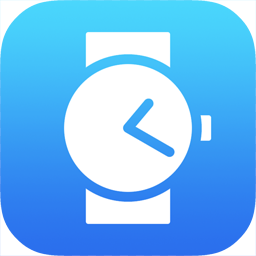« Roaming Trek

Watch Tracker
|

|
The Watch Tracker home screen
-
When you run Watch Tracker for the first time, the first thing you'll see is the "home screen."
This screen is labeled "Watch Tracker" at the top and it will have a list of all the watches you're tracking.
-
If you're somewhere else in the app and you want to get back to the home screen, you can do so by tapping the
back button on each screen until there isn't a back button anymore. At that point, you'll be at the home screen.
(The back button is the button at the top left of your display with a blue < symbol.)
-
If you want to enter data for a watch, or view the data you've entered, or view information about a watch's accuracy,
you will have to select the watch by going to the home screen and tapping on the watch.
-
If you haven't added a watch already, your list of watches will be empty (and thus invisible).
Tap "Add a watch" which is a menu item towards the top of the home screen.
-
After you tap "Add a watch," the new watch will appear in the middle of the home screen, at the top of your list of watches.
It will have a picture of a Bauhaus-style watch at the left. To the right of the picture it will have a label that says "New watch."
Tap this watch to go to its home screen.
-
In the future, if you want to delete a watch and all its data from Watch Tracker, you can go to the home screen
and left-swipe on the watch.
A watch's home screen
-
If you haven't already, you should enter a name for the watch (and optionally enter a picture of it).
This can be done by tapping the menu item labeled "Edit watch information" at the top of the watch's home screen.
This will take you to a sub-menu that allows you to edit the watch's information.
(Suggestion: the name of the watch can be its make and model.)
-
Accuracy data about a watch is in the form of "data points."
A data point is the time that was displayed by the watch vs. the actual time according to an atomic clock.
-
Data points are organized by "timing run," which is simply a list of data points.
-
A watch's home screen displays a list of timing runs for that watch.
-
Every time you set, or re-set, the watch, you will have to create a new timing run.
(Otherwise the statistical analysis of the timing run's data points will be meaningless.)
You can create a new timing run by tapping the "Start a new timing run" menu item towards the top of the watch's home page.
-
To add a data point to a timing run, or to see graphs of a timing run's data points, or to otherwise view or manipulate
the data points in a timing run, you will have to first select (tap) the timing run.
-
When you add a new watch to the app's home screen, a new timing run for the watch is created automatically.
You will see it on the watch's home screen. Tap that timing run now.
-
In the future, if you want to delete a timing run and all its data points,
you can go to the watch's home screen and left-swipe on the timing run.
The timing run screen
-
To add a data point to a timing run, tap the menu item labled "Add a data point" at the top of the timing run screen,
and follow the instructions on the resulting screen.
-
To view graphs of a timing run's data points, and statistical information about the watch's accuracy
(calculated from the timing run's data points), tap the menu item labeled "Graphs."
A timing run must have at least two data points for the Graphs feature to work.
-
You can enter as many data points as you want, whenever you want, as often as you want.
There's no benefit to entering data points on a regular schedule,
and there's no disadvantage to entering a new data point even if you just entered one a few seconds or minutes ago.
Basically, enter data points whenever you feel like it.
-
If a timing run is only a few seconds or minutes long (i.e., the time between its first data point and last data point is only
a few seconds or minutes), then the accuracy calculations will be dominated by human error and you won't be able to see
any useful information about the watch's accuracy. A timing run should be at least an hour or two long if you want
the accuracy information to be useful.
-
Note that there's a blue Help button at the top right of the display
when you're on the timing run screen. This will take you to a help file that explains the screen.
Several of Watch Tracker's screens have similar Help buttons. I encourage you to try them.
|